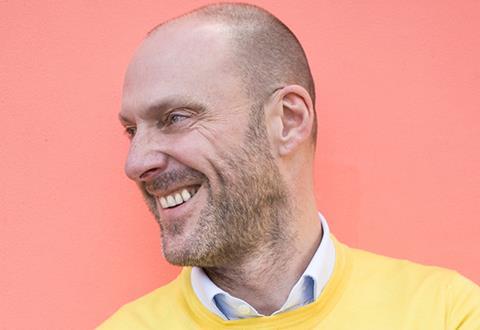Working out what makes you different, and relevant to a project, will help you to stand out from the crowd, writes Martyn Evans

This week I caught up with an architect with whom we have worked over a number of years – a practice that has done great work for us and been a reliable and delivery-focused team.
We were having a lockdown catch-up, giving me a chance to see some of the work they have been doing since we worked together last. Because we know each other well, our conversation was less formal than it might have been and gave us an opportunity to talk about how a pitch like that could work better, particularly over a Zoom call.
As you can imagine, my inbox over the past few weeks and months has been rather full with emails from architects concerned about work at a time of great uncertainty. I’ve had meetings like the one mentioned above with architects I’ve worked with many times before and meetings with people I don’t know – I’m never unhappy talking about building design with clever, inspiring people.
In all of those meetings, I have been trying to get a sense of what differentiates the practice I’m discussing – why would we hire them? What is it about their work that resonates, either with our own portfolio of projects or because it offers something new and helpful to our business?
The instinct on the part of most architects is to run through a list of projects and explain them – talking more about the clients involved and the jobs themselves than their approach and why their work makes the end result distinct, unusual and clever.
For someone who loves architecture, this isn’t a problem. But, if we imagine that many architects are pitching to clients who know a lot less than they do, and don’t have the same, shall we say, passion for the subject, the need for brevity and relevance to the subject at hand is paramount.
I went to visit an architect friend in his studio once and, as we walked through to his office, we passed a large table laid out with dozens of images of buildings. He explained that they were re-designing their website and trying to lay out all their projects in a map that would make a decent narrative, telling a good story about the diversity and scope of their work.
What I saw, on the other hand, was a jumble of projects, all different – a bewildering mis-matched jigsaw of elements that didn’t tell anywhere near a good enough story that a potential client would want to hear. Clients aren’t interested by what you have done; only how what you have done can help them.
We stood poring over the images trying, together, to marshall them into some kind of order. What I tried to explain to him was that, in fact, it was the glass of the table that you could see between the pictures that represented the glue that held them all together as the product of one studio – that what he needed to do was to write the story that sat in those gaps, the story of how each of those projects came to be. Because that is what gave them one single narrative, from one unique creative source.
The architect I mentioned at the top of this column showed me a very varied portfolio and sold that to me as a desirable quality in itself, in a kind of “we can do everything” pitch that seemed right to him, particularly at this difficult time.
What I heard was, “We will do anything that comes along: first I’ll tell you about a gallery exhibition and then I’ll show you a block of flats”.
I encouraged him to tell me a better story: what was it that connected the very successful exhibition design with the apartment building? Because something did – they came out of the same experience and design thinking.
And, if he could do that, he would have a story that was different from anyone else’s, and a story of a skillset that I could imagine applying to a problem or opportunity I might have in our portfolio.
We agreed to meet again in a couple of weeks when he has rewritten his pitch. I’ll be so happy to listen to him again. I’ll let you know what happens…
















1 Readers' comment